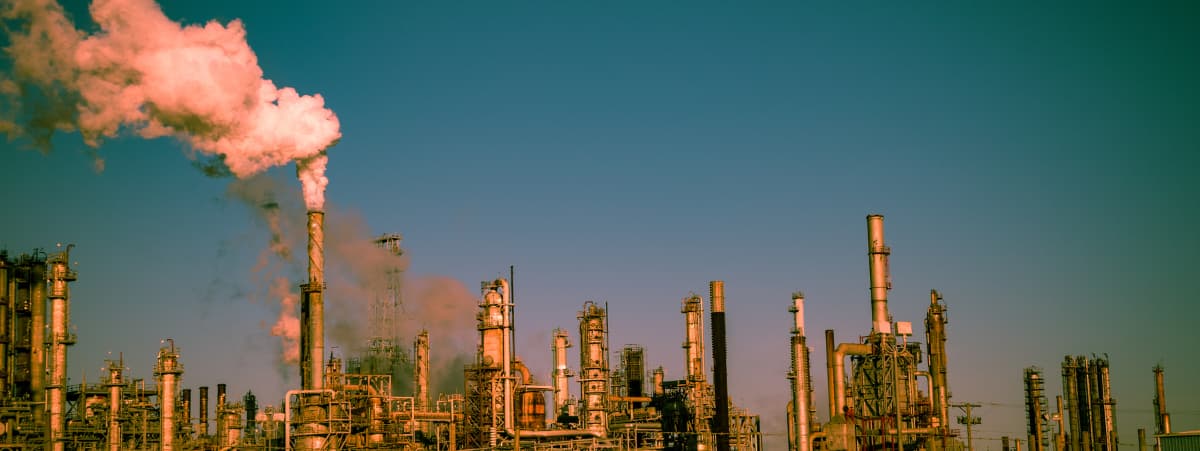When it comes to climate action, everyone knows we need to reduce our carbon footprint. But what about other greenhouse gases?
Long before everyone started talking about global warming, it was the expression “greenhouse effect” that made people reflect about their impact on the climate. It is unclear when this phrase was coined, but the concept appeared in several scientific works at the end of the 19th century, including those of Eunice Foote, Svante Arrhenius and John Tyndall.
The greenhouse effect is defined as a warming of the Earth’s surface and troposphere (the lowest layer of the atmosphere) caused by the presence of certain gases in the air. Those gases are known as greenhouse gases.
What are greenhouse gases
A greenhouse gas is any gas that absorbs heat (also known as infrared radiation) emitted from the Earth’s surface and reradiates it back. By doing that, greenhouse gases trap heat inside the planet’s atmosphere and cause the so-called greenhouse effect, leading to global warming. There are six main types of greenhouse gases, each with its own properties. Carbon dioxide is the most emitted greenhouse gas on Earth (at around 76%), which is why to combat climate change, we mostly talk about decarbonization. It is followed by methane at 16%, nitrous oxide at 6% and fluorinated gases at 2%.
Carbon dioxide (CO2)
The most famous greenhouse gas is carbon dioxide or CO2. This chemical compound is made of one carbon atom bonded with two oxygen atoms, hence the formula CO2. Before the industrial revolution, CO2 was present as a trace gas in our atmosphere, at around 228 parts per million. But today, its level has almost doubled, to 421 parts per million. This increase is responsible for the warming of the Earth’s temperature and climate change.
Sources of emission
Carbon dioxide is emitted naturally by many living organisms on our planet, including plants, animals, soils, oceans and volcanoes as they breathe and decompose. But it is the CO2 emitted by human beings that we should worry about. The wide majority comes from the burning of fossil fuels like coal, oil and gas for electricity and mobility, as well as forestry and land use. Despite government and company pledges, this activity shows no sign of slowing down: in 2022, CO2 emissions from fossil fuels reached a record 36.6 billion tons.
Carbon dioxide sinks
While this gas has a bad reputation as the main contributor to climate change, it is also the primary source of carbon for life on Earth, as it is naturally absorbed by plants, algae and bacteria through photosynthesis. This means that preserving our planet’s biodiversity is crucial to maintain its ability to absorb CO2 emissions.
CO2 can also be captured through technology and stored geologically in underground holes or chemically in products like cement.
Methane (CH4)
The second-most problematic greenhouse gas in our atmosphere is methane, which is made up of one carbon atom bonded to four hydrogen atoms (CH4). While atmospheric methane is far less abundant than CO2 at around 1.7 parts per million, its concentration has increased by about 150% from pre-industrial levels. Additionally, methane’s heat trapping power is much higher than other gases, and it is considered responsible for about half of the increase in global temperature.
Sources of emission
Methane is formed from the decomposition of organic matter in oxygen-poor environments, such as marshes, rice paddies, landfills or the digestive systems of cattle, as well as from the combustion of fossil fuels. It is estimated that about 40% of global methane emissions are from natural sources, while 60% come from human activities, led by energy (fossil fuels), agriculture, and waste.
Methane sinks
Methane is mostly absorbed in the troposphere (the lowest layer of the atmosphere), where it reacts with other compounds to form water and CO2. But forest soils also play an important role as methane sinks: there, bacteria break it down into smaller compounds they use as energy. Unfortunately, pollution and deforestation have reduced methane absorption from soils by 77% in the last 30 years.
This gas has the particularity of being usable to generate energy, and most methane reduction technologies, including landfill gas recovery from waste or biogas produced from agricultural manure, focus on this use case.
Fluorinated gases (F-gases)
While CO2 and methane occur naturally on the planet, fluorinated gases (F-gases) are entirely man-made. Developed in the 1990s to substitute ozone-damaging substances, they include hydrofluorocarbons (HFCs), Perfluorocarbons (PFCs), Sulphur hexafluoride (SF6) and Nitrogen trifluoride (NF3). Used in a wide range of industrial processes including refrigeration, electronics, cosmetics and solvents, F-gases are powerful and long-lasting greenhouse gases that contribute greatly to climate change.
Sources of emission
F-gases are emitted by the companies that produce them and by those that use them in their processes or equipment. For instance, manufacturing processes for aluminium, magnesium, electronics and electrical transmission and distribution equipment are responsible for a large part of F-gas emissions.
F-gas sinks
Unlike methane and CO2, F-gases are not absorbed by natural processes. Their only natural sink is the atmosphere, where they are mixed with other gases and spread around the world. There, they can last thousands of years before being destroyed by sunlight when they reach the far upper atmosphere.
Scientists are developing technologies to capture and reuse these problematic greenhouse gases.
Nitrous oxide (N2O)
Commonly known as laughing gas, nitrous oxide (N2O) is a non-flammable gas that is an oxide of nitrogen. While levels of N2O have rarely exceeded 280 parts per billion over the course of history, human activity in the last century has increased it significantly, to 334 parts per billion in 2021. This is particularly problematic because N2O is 300 times more potent than carbon dioxide at heating the atmosphere. It is also long-lived, spending an average of 114 years in the atmosphere before disintegrating.
Sources of emission
It is estimated that about three-quarters of N2O emissions come from agriculture, particularly from the use of synthetic nitrogen fertilizer.
Nitrous oxide sinks
The main sink for nitrous oxide is the atmosphere, though soil bacteria absorbs some of it to turn it into nitrogen. The main strategy to reduce the concentration of nitrous oxide is to change agricultural practices, implementing techniques such as regenerative agriculture.
Water vapor
Finally, the gaseous state of water is another greenhouse gas maintaining the Earth’s temperature at a livable level. Vapor alone does not cause global warming, but increased levels in the atmosphere are amplifying the warming caused by other greenhouse gases.
Sources of emission
Water vapor is produced by the heating of water, through evaporation. As the Earth’s climate becomes warmer, more water is evaporating from our seas and rivers, but also from the soil. Higher temperatures also make condensation and precipitation more difficult, maintaining higher concentration of water in the atmosphere.
Tackling greenhouse gas emissions
It is important to understand that not all regions emit the same levels of greenhouse gases. Therefore, each country needs to implement different measures to mitigate global warming. But all of them will go through the main basic steps: calculate their greenhouse gas emissions following the GHG Protocol’s emissions scopes methodology and set up measures for carbon reduction. Finally, they will look to offset the emissions they are unable to reduce by contributing to greenhouse gas mitigation projects around the world.








